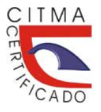EFECTO DE LA ADICIÓN DE DESECHOS INDUSTRIALES EN LA DURABILIDAD DE LADRILLOS EXPUESTOS A Na2SO4 / EFFECT OF THE ADDITION OF INDUSTRIAL WASTE ON THE DURABILITY OF BRICKS EXPOSED TO Na2SO4
Palabras clave:
Arcilla, Desechos industriales, Material de construcciónResumen
Dos grupos de ladrillos elaborados con arcilla y desechos industriales, cocidos a 900°C y a 1000°C se sumergieron en una solución de Na2SO4 para evaluar su durabilidad (ASTM C1012). Para la elaboración del primer grupo de ladrillos se utilizó 70 % de arcilla (Ar) más 20 % de ceniza de bagazo de caña (Cbc) más 10 % de ceniza volante (Cv); para el segundo se utilizó 50 % de Ar más 40 % de Cbc más 10 % de Cv. Se elaboraron 60 ladrillos de 140 x 70 x 25 mm (incluyendo los controles), para su cocción se utilizó un horno de gas L.P. de tiro invertido, el tiempo de cocción fue 6.5 h. Cinco ladrillos por mezcla y por temperatura, sin exposición, se ensayaron a flexión (ASTM C67); a los ladrillos restantes se les tomaron sus dimensiones y se sumergieron en la solución de Na2SO4 durante 100 días. Al término de la exposición los ladrillos, se inspeccionaron visualmente, se registraron nuevamente sus dimensiones y se evaluaron a flexión. Los resultados indican que los ladrillos del primer grupo, elaborados con 70 % Ar+20 % Cbc+10 % Cv y cocidos a 1000°C, presentaron menor eflorescencia, 0.15 % de expansión y su módulo de ruptura sólo se redujo en 5.5 %. Adiciones de Cbc superiores a 20 % afectan la durabilidad de los ladrillos, independientemente de su temperatura de cocción.
Descargas
Citas
BALAKRISHNAN, M. y BATRA, V.S. (2011). Valorization of solid waste in sugar factories with possible applications in India: A review, J. Environ. Manage. Vol. 92, No. 11, pp. 2886–2891.
BASPINAR, M. S. y DEMIR, I. (2010). Utilization potential of silica fume in fired clay bricks. Waste Manage. Res. No. 28, pp. 149–157.
BUCHWALD, A. y KAPS, C. (2000). The Ion Mobility of Deteriorating Salts in Masonry Materials of Different Moisture Content, Materials for Building and Structures. Euromat 99. Vol. 6, pp. 157-162.
CHANDARA, C. … [et al.] (2010). The effect of unburned carbon in palm oil fuel ash on fluidity of cement pastes containing superplasticizer. Construction and Building Materials. No. 24, pp. 1590-1593.
CHIERA, E. (2015). They wrote on clay. Cambridgee, England: Cambridge University Press.
COOPER, T. (2016). Beyond Recycling: The Longer Life Option. London: The New Economics Foundation.
CULTRONE, G. y SEBASTIÁN, E. (2009). Fly ash addition in clayey materials to improve the quality of solid bricks. Construction and Building Materials. No. 23, pp. 1178-1184.
DANA, K., SUKHEN, D. y SWAPAN K. (2004). Effect of substitution of fly ash for quartz in triaxial kaolin-quartz-feldspar system. Journal of the European Ceramic Society. No. 24, pp. 3169-3175.
ESPINOSA, R. … [et al.] (2008). Phase Change of Salts in Porous Materials: Crystallization, Hydration and Deliquescence. Journal of Construction and Building Materials, Vol. 22, pp. 1758-1773.
KAZMI, S. … [et al.] (2016a). Manufacturing of sustainable clay bricks: Utilization of waste sugarcane bagasse and rice husk ashes. Construction and Building Materials. No. 120, pp. 29-41.
KAZMI, S. … [et al.] (2016b). Exploratory study on the effect of waste rice husk and sugarcane bagasse ashes in burnt clay bricks. Journal Building Engineering. No. 7, pp. 372-378.
LINGLING, X. …[et al.] (2005). Study on fired bricks with replacing clay by fly ash in high volume ratio. Construction and Building Materials. No. 19, pp. 243–247.
MUÑOZ, V. ... [et al.] (2016). Fired clay bricks made by adding wastes: Assessment of the impact on physical, mechanical and thermal properties. Construction and Building Materials. No.125, pp. 241–252.
NAIK, N.; BAHADURE, B. y JEJURKAR, C. (2014). Strength and durability of fly ash, cement and gypsum bricks. International Journal Computational Engineering Research. Vol. 4, No. 5, pp. 1-4.
RIJINIERS L. …[et al.] (2005). Salt Crystallization as Damage Mechanism in Porous Building Materials – A Nuclear Magnetic Resonance Study, Journal of Magnetic Resonance Imaging, Vol. 23, pp. 273-276.
SÝKORA, M. …[et al.] (2018). Assessment of compressive strength of historic masonry using non-destructive and destructive techniques. Construction and Building Materials. No. 193, pp. 196-210.
TECHNICAL NOTES (2006). On Brick Construction, Industry Association, Reston, Virginia. 9.
VAN HEES, R. P. J. y BROCKEN, H.J. P. (2004). Damage Development to Treated Brick Masonry in a Long-term Salt Crystallization Test. Construction and Building Materials. No.18, pp. 331-338.
WEYANT, C. …[et al.] (2014). Emissions from South Asian Brick Production. Enviromental Science & Technology. No. 48, pp. 6477-6483.
ZSEMBERY, S. (2001). Manual 2: The Properties of Clay Masonry Units, Clay Brick and Paver Institute (CBPI), Australia.
Publicado
Versiones
- 20-02-2023 (2)
- 08-12-2022 (1)
Cómo citar
Número
Sección
Licencia
Derechos de autor 2022 Universidad & ciencia

Esta obra está bajo una licencia internacional Creative Commons Atribución-NoComercial-CompartirIgual 4.0.





















